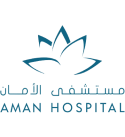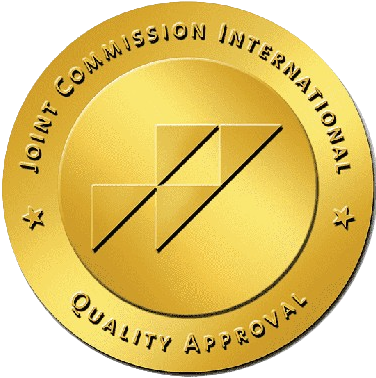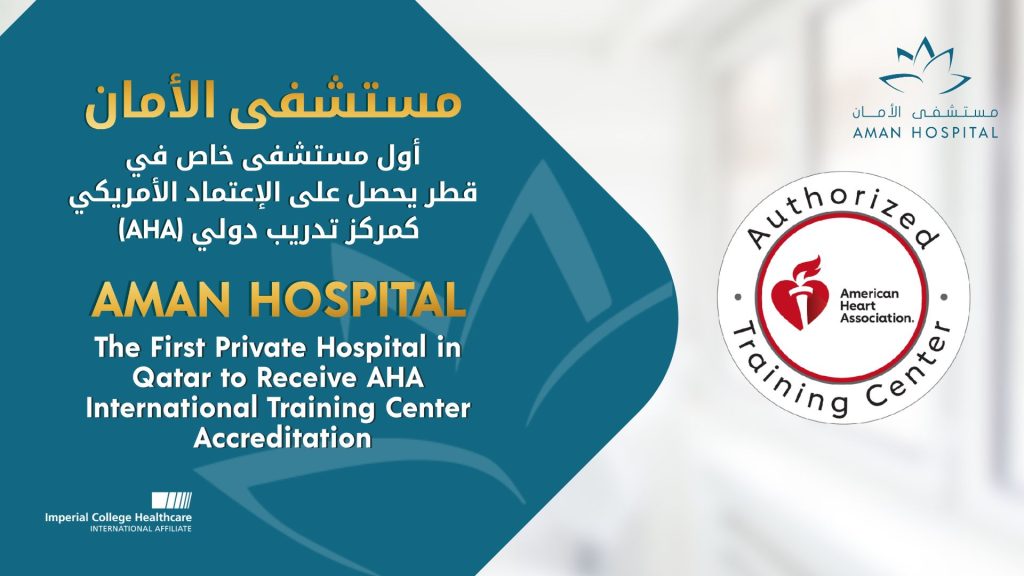Overview
Obesity is a dangerous disease leading to shortened lifespan and poor quality of life. It can have deleterious effects on a person’s body and mind. Simple everyday tasks can become challenging for a person with obesity who must also deal with social and psychological stressors. In its severe form, obesity can lead to serious health problems such as diabetes, high blood pressure, sleep apnea, and heart disease among others.
The goal of bariatric and metabolic surgery is to help patients achieve significant and sustainable weight loss and resolve or improve obesity-related medical problems. There are multiple surgical and endoscopic procedures that are available and the decision to proceed with the surgery is taken after thorough evaluation and discussion with the patient. We, at Aman hospital Bariatric Surgery Unit, are committed to excellence, expertise, and professionalism to deliver the highest quality care for patients. Our goal is to provide a personalized treatment plan, support, and education through an all-inclusive and multidisciplinary approach. We place the patient’s safety and well-being at the top of our priorities.
Why Bariatric Surgery?
We resort to Bariatric Surgery to treat obesity when diet and exercise attempts fail, particularly when the patient has serious health problems. Bariatric surgical procedures help patients tremendously in feeling less hungry and in some cases absorb fewer calories. This type of intervention should not be considered a “quick fix”, rather a tool to assist patients to adopt healthier eating habits and an active lifestyle as they lose weight. This transition to a healthier lifestyle is key to maintaining long-term results.
Who should consider Bariatric Surgery?
A relatively quick and easy way to estimate the severity of obesity is done using the body mass index which is weight in Kgs divided by the height in meters squared, BMI = W (Kgs.)/H (m)2. Bariatric surgery is considered when:
- The body mass index (BMI) is 40 kg/m2 or higher
- The BMI is 35 to 39.9 kg/m2, and the patient have a serious weight-related health problem, such as type 2 diabetes, high blood pressure or sleep apnea
- The BMI exceeds 30 kg/m2 in select cases after an extensive evaluation and benefit/risk assessment
Types of Bariatric Surgery
Description
The Roux-y-gastric bypass (RYGB) is one of the oldest operations performed for the treatment of morbid obesity. It was started in the United States in the late 1960s after surgeons observed weight loss following operations done for peptic ulcer disease. It is done laparoscopically using small “keyhole” incisions in most cases.
The steps of the operation include:
- Dividing the stomach into 2 parts: A small “pouch” measuring around 30ml and the rest of the stomach that will no longer be in contact with food. The division is accomplished by staplers (see a link to staplers)
- The next step is to divide the small intestine again with staplers and bring the intestine to the pouch and create a connection between the pouch and the small intestine (anastomosis). The intestine carrying the juices from the stomach, liver (bile), and pancreas are connected to the intestine about 100 to 150 cm away from the pouch (see diagram). This way all the digestive juices mixed with the ingested food and absorption of calories should be normal
Results
Weight loss starts immediately after the operation and continues up to 12 to 18-months after surgery and averages about 30% of the weight. After the second year, weight regain is expected and increases with time. However, most patients are still able to maintain a weight loss of around 25% of their initial weight even after 10 or 15 years.
More importantly, gastric bypass is one of the most effective treatment options for diabetes and many obesity-related health problems such as high blood pressure and sleep apnea. Several studies have demonstrated that patients who undergo gastric bypass live longer and develop less cancer than other obese patients who don’t receive bariatric surgery.
It is essential to make permanent healthy eating changes and perform regular exercise to help ensure the long-term success of bariatric surgery.
Risks and Side Effects
Immediate serious risks following RYGB occur in 5% of patients and include the risk of deep vein thrombosis (blood clots), pulmonary embolus, leak, and deep abdominal infection, bleeding, and intestinal blockage. Most will appear within the first few days. Some of these complications are best managed with early re-operation. The risk of death is less than 0.3% in experienced bariatric surgical centers such as ours.
Long-term side effects include temporary hair loss, occasional fatigue, anemia, vitamin deficiency, gallstones, and loose skin. That is why it is important to maintain regular follow-up and perform blood tests at least twice a year.
Dumping syndrome is a known side effect of gastric bypass and consists of a set of symptoms that appear after eating high caloric food. These symptoms include fatigue, dizziness, near fainting, fast heartbeat, cold sweats, and are related to low blood sugar in the blood. It is paradoxical but eating sugary food will stimulate the pancreas to release large amounts of insulin which in turn lowers the blood sugar. Dumping syndrome is preventable but avoiding eating high-calorie foods and relying more on vegetables and proteins.
Life after the Lap RYGB
The average operation takes about 90 minutes and the average stay in the hospital is around 2 days. The phases of diet include clear fluids for three days, thick fluids for five days, and soft food for one week. Thereafter food intake becomes normal. Most patients return to work within 10 days of the operation and resume exercise three weeks later.
Long-term commitment to healthy eating habits and regular activity is important to guarantee the success of the operation.
Description
The Mini-gastric bypass or one anastomosis gastric bypass is another variation of the gastric bypass. There are two major differences between the MB & RYGB: The gastric pouch in the MGB is longer. More importantly, there is one connection between the gastric pouch and the small intestine. The MGB may have the advantage over the RYGB in being simpler and quicker as an operation. Weight loss seems to be equal among the two procedures with a tendency to have more diarrhea and mal absorption with the MGB.
The major concern with the MGB is the exposure of the gastric pouch to the irritating juices of the bile and pancreas, which in the long term might lead to damage, ulcers, and possible cancer in the lining of the stomach pouch. Patients may need to have regular endoscopy follow-up after surgery.
Results
Long-term results with the MGB are like the RYGB with around 30% percent weight loss and improvement or resolution of obesity-related comorbidities.
Risks and Side Effects
Immediate serious risks following MGB occur in 3% of patients and include the risk of deep vein thrombosis (blood clots), pulmonary embolus, leak, and deep abdominal infection, bleeding, and intestinal blockage. Most will appear within the first few days. Some of these complications are best managed with early re-operation. The risk of death is less than 0.3% in experienced bariatric surgical centers such as ours.
Long-term side effects include stomach ulcers, gastritis, bile reflux, temporary hair loss, occasional fatigue, anemia, vitamin deficiency, gallstones, and loose skin. That is why it is important to maintain regular follow-up and perform blood tests at least twice a year.
Diarrhea and passing gas are common occurrences after the MGB.
Life after the Lap MGB
The average operation takes about 60 minutes and the average stay in the hospital is around 2 days. The phases of diet include clear fluids for three days, thick fluids for five days, and soft food for one week. Thereafter food intake becomes normal. Most patients return to work within 10 days of the operation and resume exercise three weeks later.
Long-term commitment to healthy eating habits and regular activity is important to guarantee the success of the operation.
Description
Laparoscopic Sleeve gastrectomy (LSG) is the most common bariatric surgical procedure performed in Qatar and worldwide. The idea of the sleeve is to reduce the capacity of the stomach by around 70% leaving the rest of the digestive system intact. Around 70% of the stomach on the left side is removed and the remaining part of the stomach now looks like a tube or a “banana”.
The sleeve gastrectomy started as a part of an operation called the duodenal switch (DS). The DS operation includes bypassing a large segment of the intestines to decrease the absorption of calories and fat. It is one of the most difficult operations to be performed laparoscopically.
Surgeons who attempted this operation in the ’90s faced a lot of difficulties and so they divided the operation into two phases. They would start with the LSG first and then a few months later complete the DS, at which time the patient would have lost weight and the operation would be easier. To everyone’s surprise, the LSG alone led to substantial and sustained weight loss and that led to the adoption of the LSG as a recognized primary bariatric operation.
Results
Long-term results with the LSG are comparable with the RYGB. The weight loss in the first 2 years is around 30% of the weight. As in all bariatric operations, weight regain is expected after the first year.
Changing eating habits, especially avoiding sugars and sweets is key to ensuring long-term weight loss. LSG is also quite effective in treating or improving obesity-related health problems such as diabetes and sleep apnea among others.
Risks and Side Effects
Immediate serious risks following LSG occur in 2% of patients and include the risk of deep vein thrombosis (blood clots), pulmonary embolus (PE), leak and deep abdominal infection, bleeding. Most will appear within the first few days. Some of these complications are best managed with early re-operation. Leaks from the staple line can sometimes be managed without an operation using stents but many patients who develop a leak will be best treated by converting the operation into a bypass. The risk of death is less than 0.1% in experienced bariatric surgical centers such as ours.
Long-term side effects include acid reflux in around 20-40% of patients. It is recommended that patients undergo follow-up endoscopy to make sure that the acid reflux is not causing damage to the lining of the esophagus, the mucosa. As with all bariatric operations, some patients will regain weight with time. It appears that weight gain is related to the re-expansion of the stomach. Vitamin B-12 levels should be monitored regularly to prevent deficiency.
Life after the LSG
The average operation takes about 60 minutes and the average stay in the hospital is around 2 days. The phases of diet include clear fluids for ten days, thick fluids for ten days, and soft food for ten days. Thereafter food intake becomes normal. Most patients return to work within 10 days of the operation and resume exercise three weeks later.
Long-term commitment to healthy eating habits and regular activity is important to guarantee the success of the operation.
Description
The Laparoscopic Adjustable Gastric Band (LAGB) was the first bariatric operation performed with small incisions. It was described in the early 1990s and quickly became popular. However, enthusiasm for the band has gradually waned because of disappointing long-term results. We are rarely performing this procedure currently.
The gastric band is made of silicon and is wrapped around the upper part of the stomach to restrict the passage of food from the esophagus down into the stomach. On the inside of the band, there is a balloon that can be inflated to tighten the opening further and deflated to loosen it up. The adjustments are done by injecting a needle into a reservoir that is implanted under the skin. The reservoir and the band are connected via a long tube.
Results
There are distinct advantages to the band including its simplicity as an operation, low immediate risks, and the fact that it is adjustable. Results vary a lot depending on patient motivation and the intensity of follow-up.
Some patients achieve excellent results on follow-up of more than years. However, at least 50% of patients have poor weight loss or have to remove the band for reasons such as band malfunction, slippage, and erosion.
Risks and Side Effects
Immediate risks following gastric band placement are uncommon but can include DVT, PE, injury to the stomach and esophagus. The risk of mortality related to the operation is very low (less than 1 per 1000). Long-term problems though are common and present in more than 50% of patients. Most require band replacement, removal with the alternated bariatric operation. Examples include acid reflux, dilation of the esophagus, band slippage, and band erosion inside the stomach, cracks in the band, tubing, or reservoir.
Life after the LAGB
The average operation takes about 45 minutes and the average stay in the hospital is around 1 day. Many patients go home the same day. Most patients return to work within 10 days of the operation and resume exercise three weeks later.
The phases of diet include fluids for three weeks. At week #4 we start adjusting the band and further tightening is done in the clinic with follow-up depending on weight loss and food tolerability. Some adjustments will need X-ray guidance. Food intake after the band becomes more difficult because some foods such as bread and chicken become difficult to swallow. It is important for patients to chew well and take time during a meal. It is also important to avoid taking foods with high-calorie content that are easy to swallow because that would defeat the purpose of the band. Long-term commitment to healthy eating habits and regular activity is important to guarantee the success of the operation.
Description
In this operation, the stomach is folded unto itself in multiple layers to make it smaller and less likely to distend. The operation starts by liberating the stomach, sealing and dividing all the small blood vessels on the greater curve of the stomach. Folding is then done with multiple sutures in layers. The operation there does not require any staples and is done laparoscopically.
Results
The LGCP is a new operation so long-term results are not available. It might be suitable for some patients, especially those who are not very obese and those who have had previous operations and need revisional surgery. More long-term data is needed before we consider the LGCP as a standard bariatric operation. The endoscopic sleeve gastroplasty (ESG) is similar to the LGCP but done using the endoscope through the mouth avoiding surgery. ESG might eventually replace LGCP; to know more about ESG press this link.
Risks and Side Effects
Immediate risks following the LGCP include DVT, PE, perforation of the stomach, and bleeding. The risk of mortality related to the operation is low (less than 0.1%). Long-term problems, including weight regain, might occur if some of the sutures disrupt. There is also concern that re-operation after the LGCP might be difficult, making revisional bariatric surgery in this group of patients potentially risky.
Life after the LGCP
The average operation takes about 60 minutes and the average stay in the hospital is around 2 days. Nausea and vomiting are very common the first few days and more pronounced than in other bariatric operations. The phases of diet include clear fluids for ten days, thick fluids for ten days, and soft food for ten days. Thereafter food intake becomes normal. Most patients return to work within 10 days of the operation and resume exercise three weeks later.
Long-term commitment to healthy eating habits and regular activity is important to guarantee the success of the operation.
Description
The main feature that distinguishes these types of operations is limiting the absorption of calories, especially fat by limiting the length of bowel used in the digestion of food. In a sense, it is more of a radical bypass. On the other hand, the stomach is kept a bit on the large side allowing patients to eat larger quantities to avoid protein malnourishment. There are many variations to this approach, and these are referred to as BPD, DS, or SADI.
Results
The long-term results of the BPD, DS and SADI are the best in terms of weight loss and resolution of obesity-related co-morbidities. The average % weight loss is 30-35% of the weight even after 10 and 15 years.
Risks and Side Effects
Because of the severe shortening of bowel length side effects related to poor intestinal absorption are quite common. These include diarrhea, foul-smelling stools, foul-smelling gas, vitamin deficiency, osteopenia, poor vision, protein loss, etc… Follow-up of nutritional and vitamin deficiencies is very important.
Because these operations are more complicated than the gastric bypass or sleeve, the decision to proceed with these is taken after a comprehensive multi-disciplinary evaluation. In general, we reserve these operations to patients who have gained a lot of weight after first or second operations or those who have extreme obesity.
Life after the BPD/DS/SADI
The BPD/DS/SADI operations take 2-4 hours to complete laparoscopically. The average length of stay in the hospital is 2 days. The transition of diet from liquids to solids takes about two weeks. Most patients return to work within 10 days and to exercise within three weeks of the operation.
As mentioned earlier, long-term nutritional deficiencies are common so it is important to stay on vitamins lifelong and follow-up periodically with blood tests and visits to the doctor.
Description
Some patients regain weight, don’t lose much weight, or develop complications related to their bariatric operation. In such patients, revision or corrective surgery may be required. Revision surgery is sometimes needed to fix problems such as ulcers, intestinal blockage, leaks that don’t seal, or nutritional deficiency. It may also be needed in case of failure to lose weight or in case of insufficient weight loss.
Many patients do not necessarily need surgery and can be helped with various approaches including diet, behavioral therapy, medications, and endoscopic interventions. The team at Aman hospital has vast experience in revisional bariatric surgery and we welcome the challenge of taking care of patients with such difficult problems.
Results
The long-term results of revisional surgery are good if the problem has been diagnosed and characterized properly and remedial surgery is well chosen and well done.
Risks and Side Effects
Revisional surgery is more difficult and thus carries a higher rate of complications and side effects compared to primary bariatric operations. It should be performed by experienced bariatric surgeons or endoscopists in specialized centers such as Aman Hospital.
Life after Revisional Surgery
Revisional operations can sometimes be easy with short operative times and hospital stays. Other times, this type of surgery can require open rather than laparoscopic surgery and necessitate a long time in the hospital. Most revisional operations aim at fixing or improving a problem, so it is expected that most patients would be and feel better.
In conclusion, while bariatric surgery can offer many benefits, all forms of weight-loss surgery are major procedures that can have risks and side effects.
Meet The Doctors
FAQs
- Qatar ID / valid passport
- Insurance card
- Laboratory studies (in case available)
For insurance and price inquiries, please contact our call center at +974 4400 4400 between 8 am to 10 pm.
The Bariatric Surgery Specialty Unit in Aman Hospital is located at the following address: Ground Floor, Outpatient 2.
We recommend you allow enough time to park to ensure you arrive on time. Please plan to arrive 30 minutes prior to your appointment time. Our valet parking is here to assist you, take your car and park it safely in our underground parking.
Always feel free to bring someone with you to your appointments. A family member or friend can help ask questions, remember the information your care team gives you, and provide support.
Please call our call center at +974 4400 4400. They are available from Saturday to Thursday from 8 am to 10 pm to help you reschedule or cancel your appointment.
Our Support Services
- Specialized physical therapist who helps you to improve your joint pain and muscles strength, informs you on the proper ergonomic postures to prevent back pain, and customizes a targeted program that fits your health status. For any inquiry, please contact +974 4400 4400.
- Dietary services will guide you and your family regarding healthier food choices in case of dyslipidemia, diabetes, obesity and hyperuricemia. For any inquiry, please contact +974 4400 4400.
- Pharmaceutical services will guide you regarding your medications and/or biologic treatments: administration mode, timing, side effects, management in case of infection and address any question that may arise. For any inquiry, please contact +974 4400 4400.
- Nursing services for patient education who will provide you with all the information about your disease and treatment and answer your questions. For any inquiry, please contact +974 4400 4400.
- Healthcare practitioner who will coordinate all your appointments and make sure to schedule the appointments at your convenience. For any inquiry, please contact +974 4400 4400.
- Financial team who is here to secure your insurance approvals on time and assist you with any financial inquiries. For any inquiry, please contact +974 4400 4400.






